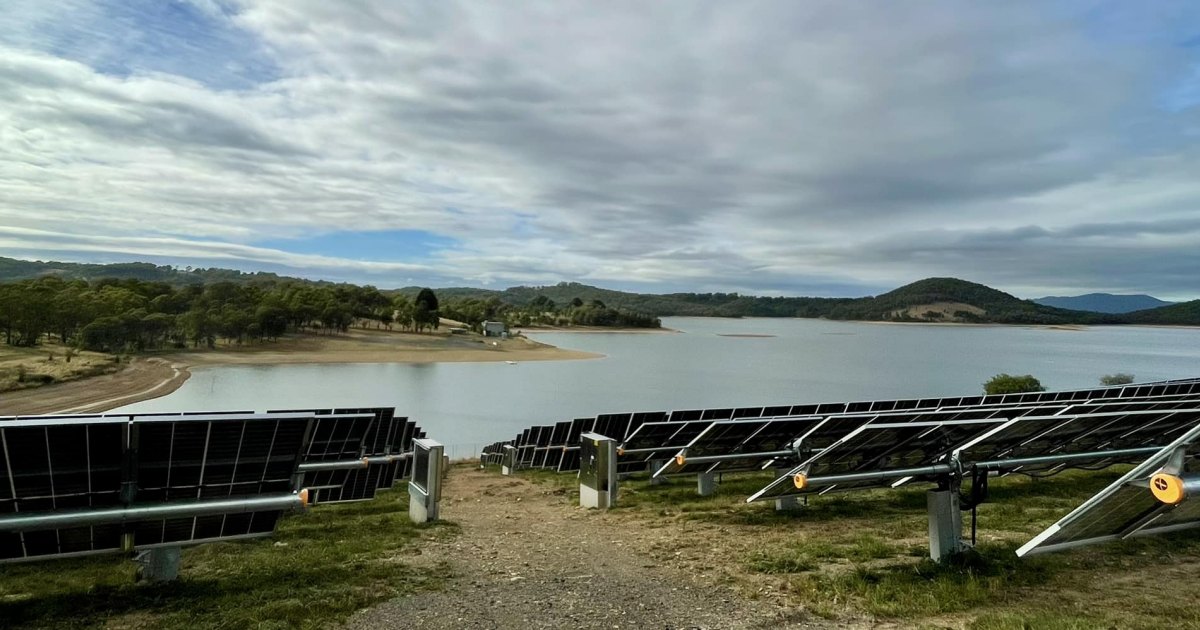Melbourne Water is another step closer to its net-zero emissions goal with the completion of a solar farm at Winneke Treatment Plant in Melbourne’s north-east.
Constructed in 1980, the treatment plant is located near Sugarloaf Reservoir at Christmas Hills; around 35 kilometres from Melbourne’s CBD. It was the first to supply Melbourne with fully treated water and currently treats around a quarter of the city’s drinking water.
Treating water is an energy intensive exercise and the Winneke plant is third largest energy consumer in Melbourne Water’s infrastructure portfolio. The Victorian water sector has a goal of sourcing 100 per cent of its electricity requirements from renewable energy sources by 2025, and some of this will be delivered by on-site solar energy projects such as that at Winneke.
The first row of panels were installed at Winneke in April last year. While construction has now been completed and the facility was officially opened by Victoria’s Minister for Water Harriet Shing on Friday, full operations won’t commence until later this year.
Spanning 10 hectares, the 19,000 solar panels will generate approximately 12,400 megawatt-hours of clean electricity each year. This is a “behind-the-meter” facility, with its output to be used by the plant and any surplus electricity exported to the mains grid.
“This project is an exciting example of how we are boldly progressing towards de-carbonisation, delivering on climate change mitigation, adaptation, and planning,” said Melbourne Water. ” Better for Melbourne and our planet.”
An interesting aspect of this project is a walking track around the facility that is accessible to the public.
“This solar farm will be a great attraction for the local community to see first-hand the beauty of our renewable energy revolution and know that their local water service is doing its bit to reduce emissions,” said Member for Eltham Vicki Ward, who also attended the opening.
Melbourne Water And Renewable Energy
Melbourne Water has another and much bigger PV project in its portfolio – the Eastern Treatment Plant Solar Farm, which consists of 38,961 panels. The 19MW facility is one of the largest ‘behind-the-meter’ solar installations Australia.
As well as solar PV, the utility has various mini-hydro power stations installed generating 60 gigawatt-hours of electricity annually, and biogas is captured from sewage treatment plants for electricity generation. Using biogas for electricity generation currently meets 80% of the Western Treatment Plant’s and 30% of the Eastern Treatment Plant’s electricity needs.
The Victorian water sector is responsible for more greenhouse gas emissions than any other state government sector. It has a target of achieving net zero emissions by 2035 (Melbourne Water is shooting for 2030), which will translate to an annual emissions reduction of almost 900,000 tonnes per year.
Trivia: Melbourne Water is celebrating its 132nd anniversary. Its predecessor, the Melbourne and Metropolitan Board of Works (MMBW), was established and held its first meeting on March 19, 1891. The Board was established based on the recommendations of the 1888 Royal Commission into the Sanitary Health of Melbourne.


 RSS - Posts
RSS - Posts



Speak Your Mind